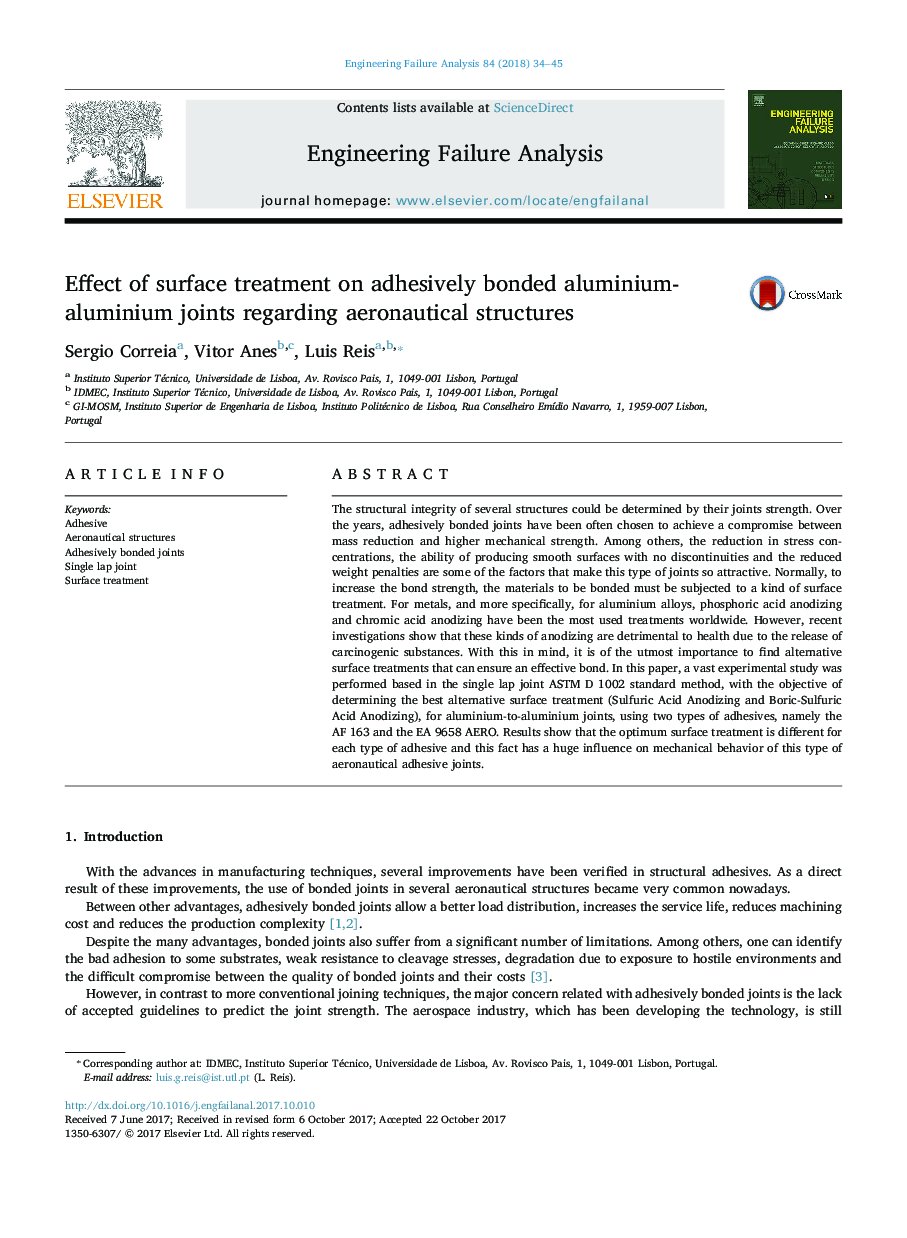| Article ID | Journal | Published Year | Pages | File Type |
|---|---|---|---|---|
| 7167615 | Engineering Failure Analysis | 2018 | 12 Pages |
Abstract
The structural integrity of several structures could be determined by their joints strength. Over the years, adhesively bonded joints have been often chosen to achieve a compromise between mass reduction and higher mechanical strength. Among others, the reduction in stress concentrations, the ability of producing smooth surfaces with no discontinuities and the reduced weight penalties are some of the factors that make this type of joints so attractive. Normally, to increase the bond strength, the materials to be bonded must be subjected to a kind of surface treatment. For metals, and more specifically, for aluminium alloys, phosphoric acid anodizing and chromic acid anodizing have been the most used treatments worldwide. However, recent investigations show that these kinds of anodizing are detrimental to health due to the release of carcinogenic substances. With this in mind, it is of the utmost importance to find alternative surface treatments that can ensure an effective bond. In this paper, a vast experimental study was performed based in the single lap joint ASTM D 1002 standard method, with the objective of determining the best alternative surface treatment (Sulfuric Acid Anodizing and Boric-Sulfuric Acid Anodizing), for aluminium-to-aluminium joints, using two types of adhesives, namely the AF 163 and the EA 9658 AERO. Results show that the optimum surface treatment is different for each type of adhesive and this fact has a huge influence on mechanical behavior of this type of aeronautical adhesive joints.
Related Topics
Physical Sciences and Engineering
Engineering
Industrial and Manufacturing Engineering
Authors
Sergio Correia, Vitor Anes, Luis Reis,
